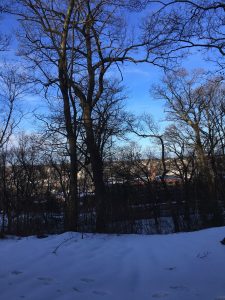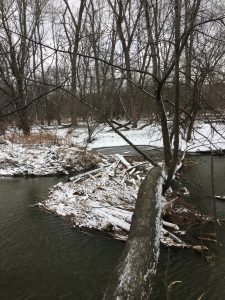Over spring break I ventured to a salubrious natural area known colloquially as the Ottoson Woods, due to its close proximity to my alma mater The Ottoson Middle School. Everyday, or rather every school day, these woods are utilized by savvy middle schoolers attempting to shave a few minutes off their daily morning trek. All these teenage feet have carved several paths throughout the woods, which fragment the area into distinct parcels. The parcel I paid special attention to strangely lacks trees besides a few scattered trees and a neat row of four. All these trees I believe are some kind of oak. A few of the branches were holding onto a small but noticeable amount of leaves. This leads me to believe that they are possibly red oak or pin oak, for these are species known to occasionally hold onto dead leaves in the winter time. At my spot there also were scattered birches in an area of smaller shade intolerant trees and the occasional woody plant. With that being said, mostly oaks comprised the land.
I am guessing that this patch is empty of trees because it was once cleared. The spot is at the top of a fairly steep drop off, making it a good view in the winter when the trees have shed their leaves. It is my theory that the land was cleared to give the folks of Arlington a nice place to go and look at a moderately pretty view. Due to the fact that hoards of middle schoolers trample through the Ottoson Woods twice a day, many smaller and young species are not able to develop into larger versions of themselves. Also, there is a thick suburban neighborhood. The Ottoson Woods is one of the few natural area close by that these people can enjoy. So besides young students, there are always humans and dogs walking and running, which further disturbs the woods.
On the day I visited the woods it was ominously quiet. I looked in the canopy for signs of birds, but I was not able to spot any with my eyes. As I started to make my way out of the forest, I heard a caw in the not so distant distance. I am fairly sure it was a crow, but it also could of been a raven. Overall the dearth of birds and bird calls was disappointing, although not surprising when one considerate the size (small) and the surrounding environment (residential neighborhoods) of my spot.
Embedded Map of my spot, which I just learned is called Crusher Lot!



